15 Ways Magicians Fool Us
Very few members of the general public will watch the performance of a magic
trick and know just how it’s done. Everyone wants to know but there are very few
people who would ever be able understand just what goes into the process –
whether it’s a simple card trick or a spectacular, elaborate stunt.
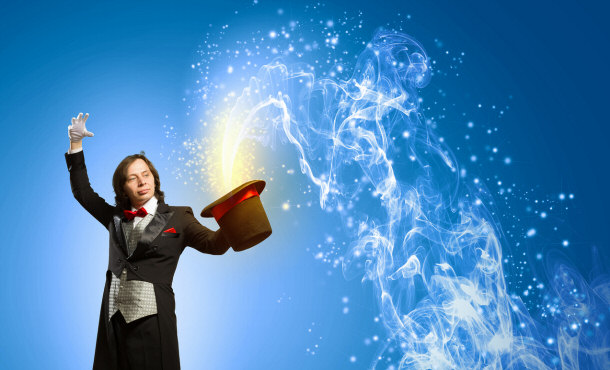
While some people might be able to eventually figure out a few of the devices
used in order to perform the tricks, there’s very little chance that the average
person could ever work out every technique. This is because, behind all the
glitz and glamour of every magical ruse, is a precise and often elaborate mix of
methods that a magician employs – all which brilliantly exploits human nature
and defies logic in its effect.
15) Anticipation
Typically, people are going to assume that there is only one way to perform a
trick. While this is often the case, there are a number of tricks that are more
comprehensive. For example, many tricks use a deck of cards to play a guessing
game. The magician pulls out a card from the sleeve of his shirt or from another
piece of clothing on his body to show the participant and audience which card
the participant picked.
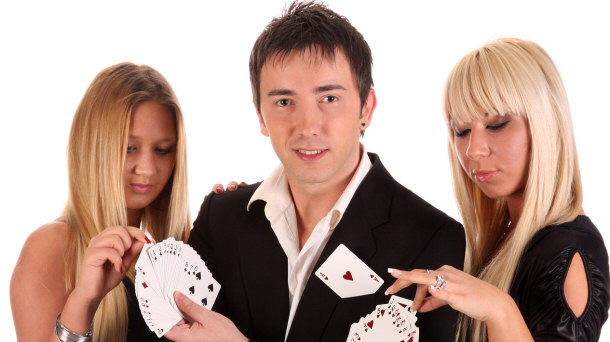
The magician often hides a duplicate of each card that
is being guessed somewhere on his person. After the participant answers a few
questions, meant to tell the magician which card was picked, he simply grabs
that card from where he hid it.
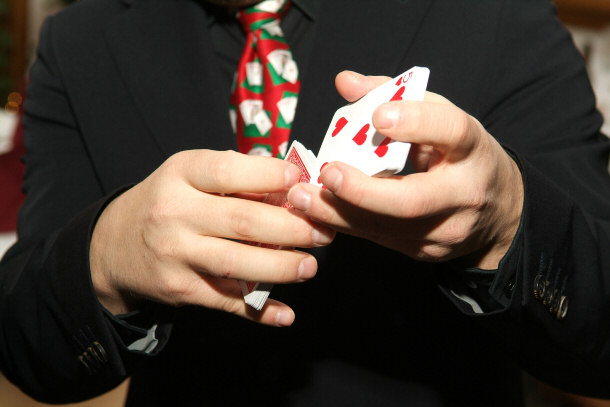
14) Continuity
The woman cut in half trick is a classic magic stunt. It’s so well known that
the secret of the trick has long since become public knowledge. That is, there
are two women in the box – one whose head you see and the other whose legs you
see.
On the other hand, the trick might entail using legs that are fake, which are
featured as the woman lowers herself inside the box, creating the illusion that
she’s lying down flat. However, in reality, she is simply curling herself up in
the top portion of the box.
Description of How the Trick is Commonly Performed:
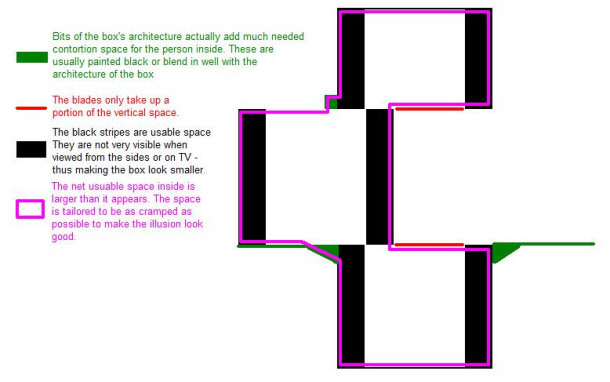
While many people may know how the act is performed, magicians still perform
the trick. That’s because, psychologically, the brain still registers that a
woman was cut in half as the magician performs the act using smokescreens,
thereby causing the viewer to want to visually make sense of it and meet his
need for continuity.
Magician Performing the Infamous Sawing Woman in Half
Trick:
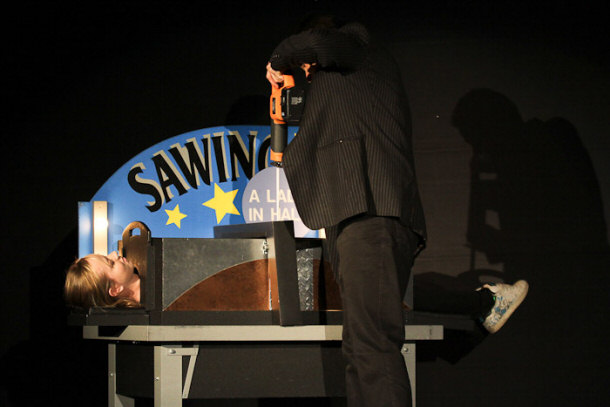
13) After Image
After image is when your brain sees something for a short time after you last
saw it. A common demonstration of this is when someone stares at an image in
black, then stares at a white surface and still sees the image a few seconds
afterward.
Sleight of Hand Employs After Image in Magic Tricks as Well
as in Illegal Shell Games:
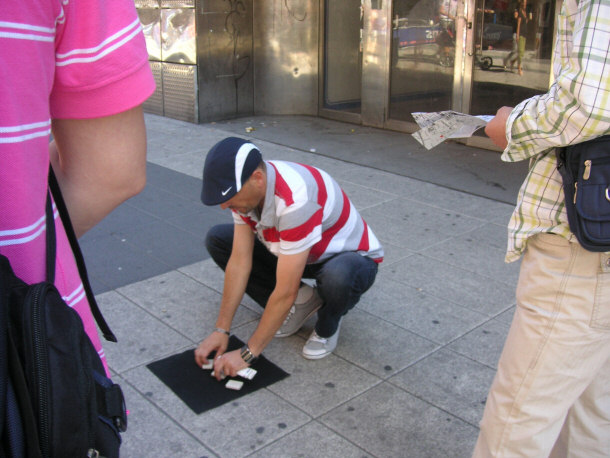
By Holger.Ellgaard
via Wikimedia Commons
Magicians will often make use of this technique when it comes to performing
tricks that use sleight of hand or which involve the transfer of an item from
one hand to another. By using this method, the magician can make you believe
that an item is in your hand longer, thereby making it easy for him to make a
switch.
Painting of an Early Shell Game Entitled "The Conjurer" by
Hieronymus Bosch, 1496-1520:

Magicians can also make use of an after image when it comes to removing a
participant’s watch. When a magician squeezes a participant’s wrist, it will
leave an after image that leads the participant to believe that the watch is
still on his wrist when, in fact, its’ been removed.
12) Combining Tricks
Magicians will frequently employ the technique of misdirection by combining
tricks. Therefore, the magician will use one trick to “prove” the validity of
another one. A common example of this device is seen when a magician levitates
an object or person using strings, all which can’t be seen because of the
distance between the stage and the audience.
Magician Larry Jones Levitating His Wife Joined by Their
Sons:
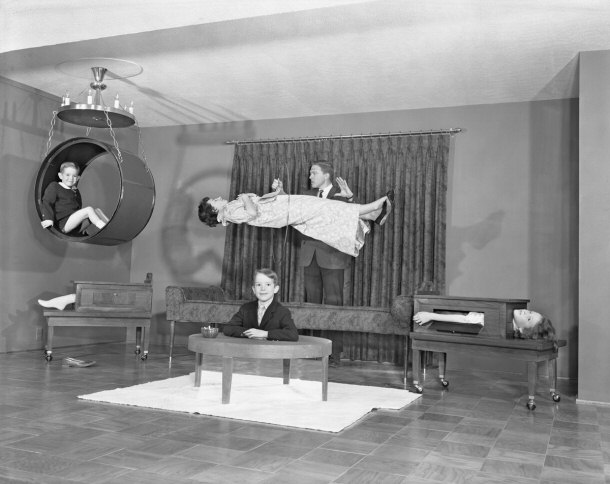
To prove there are no strings, the magician runs a hoop in the space where
the lines are supposedly attached to prove their non-existence. However, he is
merely using a clever means of choreography to produce the desired effect.
11) Moving Spotlight Method
For most people multi-tasking isn’t something that comes easily. The human
brain isn’t always adept at focusing on more than one thing at a time.
Therefore, magicians make the most of the general public’s inability to
concentrate. As a result, they often maintain an audience’s attention by what is
known as the moving spotlight method. Using this approach, the magician
highlights one specific item or activity, thereby rendering everything else in
the surrounding void as insignificant.
Magic Lamp Lit Using Moving Spotlight Method and Smoke
Effect as a Result:

So, when audience members focus on a particular item or action, they
typically won’t look at anything else. This technique allows the magician to
make use of illusions or keep the viewer’s mind occupied on one item or movement
at a time.
10) Allowing the Audience to Fool Themselves
Pretty much everyone who watches a magic show wants to know how a trick is
performed and will jump at the chance to discover the answer. Magicians are well
aware of this fact and will use it to further confuse the curious audience
whenever they can.

David P. Abbott (1863 – 1934) was a magician who, in the early 1900s, was
known for a trick that involved making a golden ball appear to float around the
room. At the end of each show, Abbott would intentionally leave the ball where
it could easily be seen. Invariably, whenever given the chance, people would
want to test out the ball, only to discover that the sphere was remarkably heavy
– in fact, much too heavy for any string to support. Although the trick was
performed with a string, the ball that was left behind was, in fact, a decoy.
Magician David P. Abbott and His Famous Golden Ball
Routine:
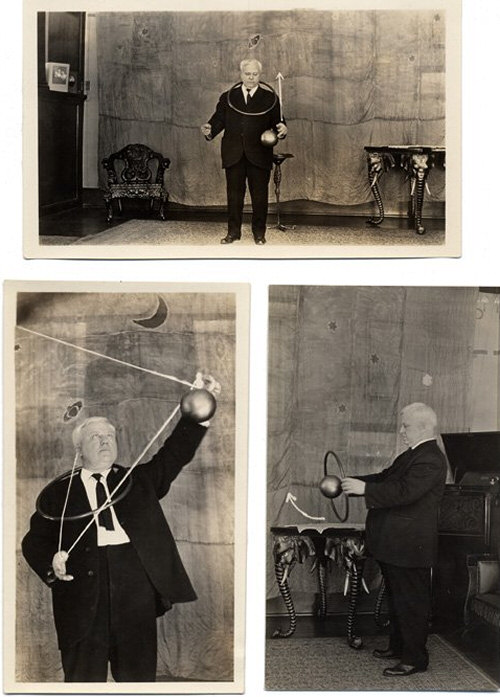
Therefore, the ball that Abbott used in the trick only weighed about five
ounces while the decoy ball weighed a good deal more. In essence then, the
audience fooled themselves into thinking that the decoy was the ball used in the
trick, thereby validating the wizardry of act.
9) Misinformation Effect
The misinformation effect is when people are given additional information
relating to an event, which then alters their recollection. This technique is
often used in tricks were the magician uses cards or in magic acts where members
of the audience are asked to remember certain details.
Retroactive Memory Interference Applied to Principles of
Misinformation Effect:
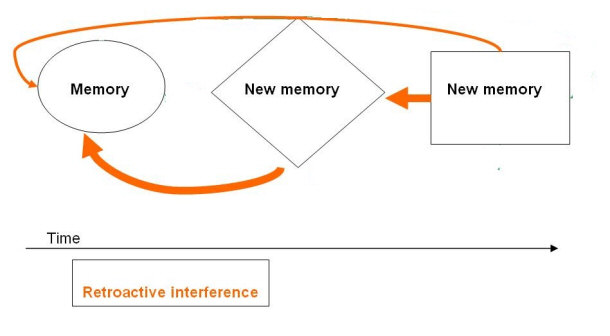
By Catherine Hare
via Wikimedia Commons
Magicians commonly use the misinformation technique when they tell a
participant to select a card from a 52-card deck. The magician will ask a
participant to choose any card but tell him to pick the card from the left side
of the deck.
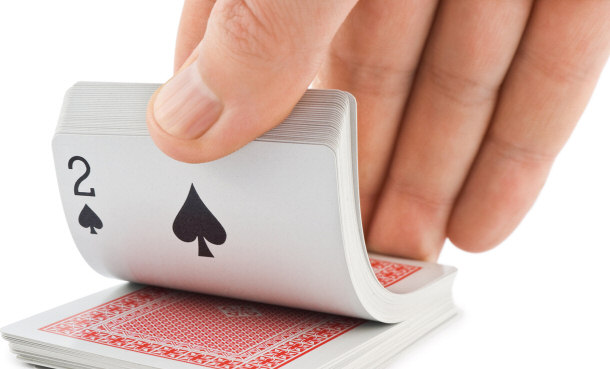
In turn then, the participant is choosing one specific card from
half the deck of 26 – the card, of which the conjurer knows the identity.
Because people often want to make sense of things, they’re natural inclination
is to bypass the notion that they’re being tricked.
8) Over Investment
Most people, when they view a magic act, like to believe there is a simple
explanation for the wizardry. While some tricks can be explained easily, other
tricks involve more complexity – that is, more time and effort are put into the
performance than what you’d think it’d involve.
Raymond Teller Speaking at The Amazing Meeting 2012 Las Vegas, Nevada:

By BDEngler
via Wikimedia Commons
For instance, years ago, on an appearance on the ‘Late Show with David
Letterman’ (1993 – present), magicians Penn & Teller performed a trick where
they produced 500 living cockroaches from a top hat that was placed on
Letterman’s desk.
Penn Jillette Speaking at The Amazing Meeting Las Vegas,
Nevada:

By BDEngler
via Wikimedia Commons
In order to pull off the deception, it took the pair several weeks to prepare
for the hoax. Not only did they have to hire an entomologist to help them secure
the creatures, they also had to build a secret compartment into the hat. The
trick ended up taking mere minutes to perform. However, all the preparation that
went into setting up the ruse made it difficult for anyone to determine how the
trick was performed.
Often fortune tellers or psychic mediums as they are more popularly known as
today, employ this technique to appear as if they have read something from just
randomly looking at one of their audience members. Most of the time these
performances have been scripted or there has been significant research and
almost espionage is conducted by their respective production teams.
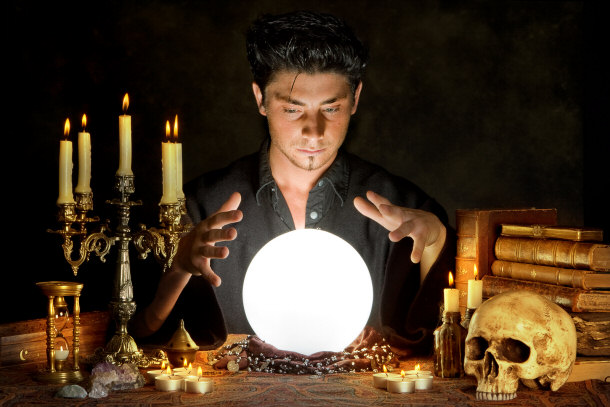
This is done so that the medium can appear as if they can read everything
about a random person just by looking at them just by focusing their mental
energy.
7) Laughter
The objective of a magician is to entertain. While humor is often
incorporated into a magic act, it’s not necessarily used for sake of
entertainment alone. Rather, when it comes to magic, laughter is a very powerful
tool. Almost invariably, magicians will systematically insert jokes into their
act with careful precision.
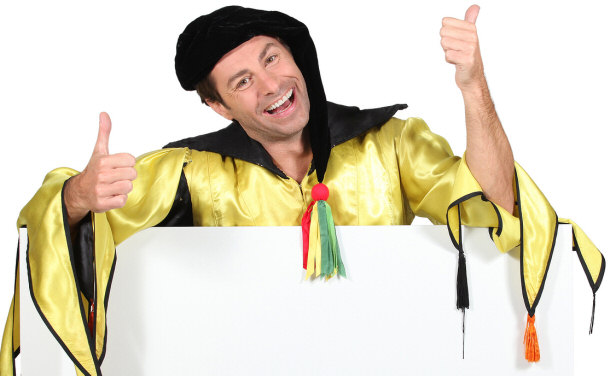
Therefore, jokes are usually supplied as a means of distraction and are used
during a crucial move in the act. Laughter serves to keep audience members
preoccupied so they don’t see any small actions the illusionist makes.
6) Memory Prediction Framework
Memory Prediction Framework is when we have seen something thousands of times
and our brains remember and expect it to always happen. For example, when we see
a ball thrown into the air, we naturally expect it to come back down, just as we
have seen it happen time and time again.
Raymond Teller Performs the Cup and Ball Trick:
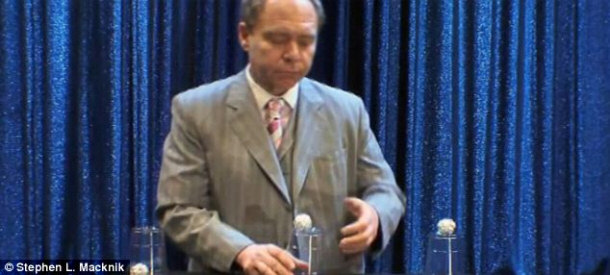
Therefore, an interesting thing happens when memory prediction framework is
employed. Because you expect something to occur, you may not realize that it
didn’t happen, as you thought, at all. As a result, “sorcerers” exploit this
method regularly to fool audience members. For example, when you see a magician
place a ball in a cup, you instantly think it will re-emerge. When what you
anticipate does not occur, it creates an impression that leaves you in
disbelief.
5) Change Blindness
Change Blindness is used for an illusory effect in magic tricks. When we look
at something which changes, but the alteration is barely noticeable, the brain
does not register the difference, and it’s perceived as being insignificant.
Unless you’re looking for a specific change, you won’t be able to see any
differences visually in a magic act.
See if You Can Spot the Differences in This Photograph:

By WikiCantona
via Wikimedia Commons
4) Pattern Recognition
Pattern Recognition is a technique that magicians exploit to great effect.
For example, there’s a classic coin trick that highlights this kind of illusory
device. In the trick, the magician hands over four coins, one after another,
with the back of his hand facing the participant. The magician will then show
the onlooker that the palm of his hand is empty, before handing over yet another
final coin. Because of the pattern that was established, the onlooker perceives
that all of the coins were produced from an empty hand when, in reality, the
magician only made it look like his hand was empty before he produced the last
coin. The first four coins were not produced before the trickster displayed an
empty palm Nevertheless, the audience will still interpret that all five coins
appeared magically from the magician’s bare hand, all due to this illusory
device.
Street Magician Performing the Coin Trick Finale:
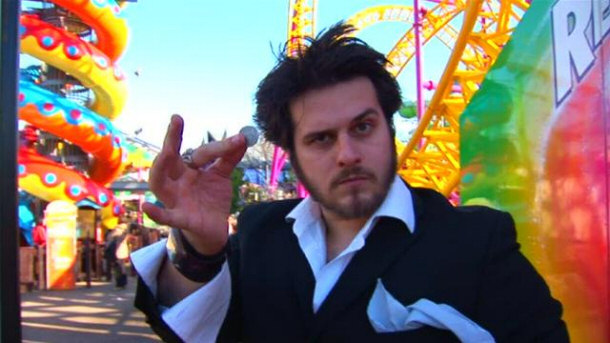
In the previous section dealing with change blindness, the difference between
the two photographs was that the one on the left featured people walking towards
the left-center of the frame as well as a tower towards the left background.
3) Charm
Charm is another way the magician distracts his audience. In fact, using such
devices, as charisma and charm, will significantly impact the thoughts of the
audience. That’s because this kind of social interaction will trigger the
release of Oxytocin, which is a bonding hormone.
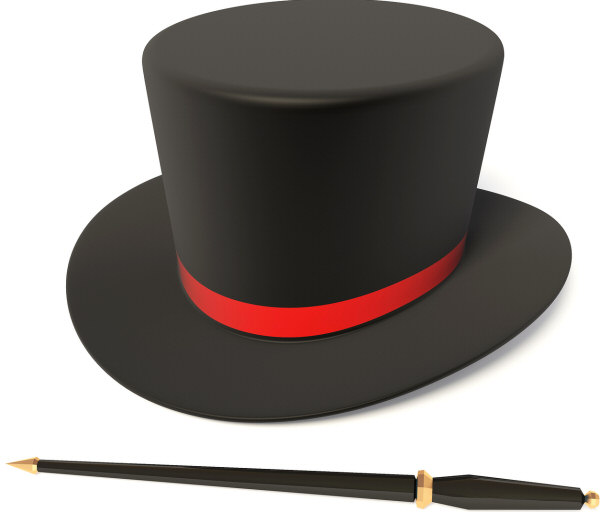
By utilizing this approach
then, the magician can deflect an audience’s attention so they don’t look at him
as critically nor the moves he’s making in his act.
2) Cognitive Dissonance
Cognitive Dissonance is used by magicians so viewers will find justification
for what they’ve just seen. Magicians use this technique in tricks to display a
reality which overrides what viewers perceive to be true.
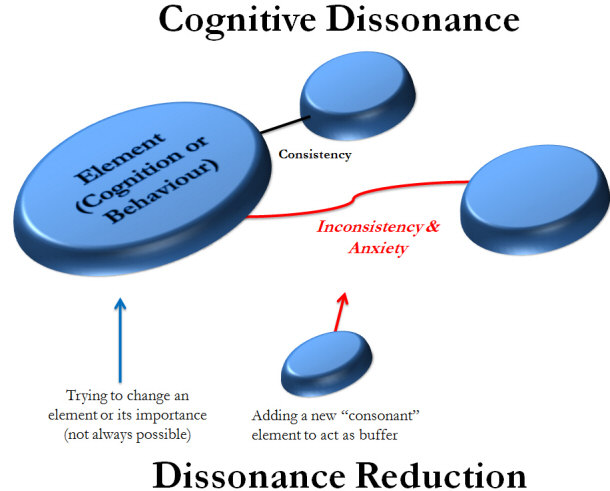
By Tesseract2
via Wikimedia Commons
As a result, audience
members are unable to make sense of what they just witnessed and are awed by the
event.
1) Exogenous Attentional Capture
We all love experiencing new things. Whenever we spot something new and
exciting then, we can’t help but not notice it – and may even fixate on it.
Exogenous Attentional Capture (EAC) is a subliminal device used by magicians to
grand effect.
Lance Burton Uses Many Animated Gestures and is Very Active
During His Show:

Therefore, EAC is often employed when the magician pulls rabbits or birds
from his shirt or hat. Magicians will also make use of EAC for diverting the
audience’s attention. For example, he may use fast and elaborate hand movements
to draw the audience’s attention away from some activity he doesn’t want the
audience to notice or see.
Conclusion
When it comes down to it, magic is really an intricate and elaborate art
form. Like all creative fields, some individuals are more adept at utilizing the
various aspects that make up the art.
While there are a variety of styles employed in magic tricks, all which are
used to excite, engage, and confuse members in an audience, the complexity of
the devices used and human nature will make magic an art form that will be
enjoyed for many years yet to come.
Talent
15 Ways Magicians Fool Us
44 Examples of the Extreme History of Method Acting |